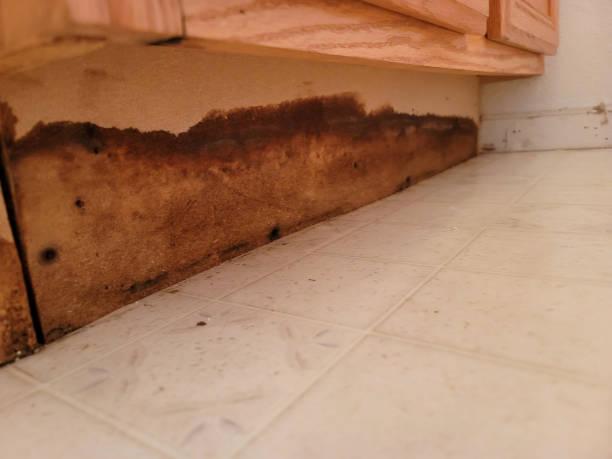A Guide to Crawl Space Waterproofing: Everything Homeowners Need to Know

Crawl space waterproofing is an essential part of maintaining a healthy, energy-efficient, and structurally sound home. Often overlooked, the crawl space can become a hidden source of moisture-related issues such as mold, wood rot, poor air quality, and even foundation damage. Left unaddressed, these problems can escalate into costly repairs and compromise the safety of your living space.
This guide covers everything homeowners need to know about crawl space waterproofing—from why it’s important to how it’s done. Whether you're dealing with standing water, high humidity, or just want to be proactive, understanding the process will help protect your home in the long run. Key Waterproofing Construction provides professional expertise that supports long-term solutions, making them a trusted name in crawl space repair and protection.
Why Crawl Space Waterproofing Matters
Your crawl space may not be visible daily, but it significantly impacts your home’s overall health. A damp, poorly ventilated crawl space can lead to:
-
Mold and mildew growth
-
Wood rot and structural weakening
-
Pest infestations
-
Poor indoor air quality
-
Increased energy bills due to humidity and insulation issues
Waterproofing addresses these issues head-on, offering a long-term solution that protects your investment and creates a more stable foundation for your home.
Common Causes of Crawl Space Moisture
Before starting the waterproofing process, it's important to understand what’s causing moisture in the first place:
-
Poor drainage around the foundation
-
High groundwater levels
-
Cracked foundation walls
-
Plumbing leaks
-
Unsealed vents allowing moist air in
Identifying and addressing the source is a key step in effective crawl space waterproofing.
Interior Crawl Space Waterproofing Methods
Interior solutions are often the first line of defense and can include:
-
Vapor barriers: Heavy-duty plastic sheeting that covers the crawl space floor and walls to block moisture.
-
Sump pumps: Installed in low areas to collect and discharge water away from your home.
-
Dehumidifiers: Help control humidity levels, preventing mold and moisture buildup.
-
Insulation upgrades: Moisture-resistant insulation adds another layer of protection and improves energy efficiency.
Exterior Crawl Space Waterproofing Methods
Though more involved, exterior methods provide additional protection:
-
Excavation and waterproof coatings: Digging around the foundation to apply waterproof sealants.
-
French drains: Redirect surface and groundwater away from the crawl space.
-
Proper grading and gutter systems: Ensure water flows away from your foundation, not toward it.
Cost Considerations
The cost of crawl space waterproofing varies based on the scope of work. On average, homeowners can expect to spend between $3,000 and $15,000, depending on:
-
The size and condition of the crawl space
-
The severity of the moisture problem
-
Type of waterproofing methods chosen
-
Materials and labor involved
While the investment may seem significant, it's far less expensive than dealing with structural repairs, mold remediation, or foundation replacement.
Long-Term Benefits
Waterproofing your crawl space offers several advantages:
-
Protects structural integrity
-
Prevents health hazards like mold and allergens
-
Increases energy efficiency and lowers utility costs
-
Enhances resale value and home longevity
Professional Insight: Key Waterproofing Construction
With years of experience in crawl space waterproofing and foundation protection, Key Waterproofing Construction delivers solutions tailored to each home’s unique needs. Their expert team uses industry-standard materials and methods to ensure long-lasting results with minimal disruption.
When to Call a Professional
While small crawl space issues—like minor dampness or a loose vapor barrier—can sometimes be managed with DIY solutions, there are clear signs that call for professional help. Persistent water accumulation, visible mold growth, wood rot, high humidity, or structural cracks should never be ignored. These are often indicators of underlying problems that require expert evaluation and specialized equipment to fix properly.
Professionals have the tools, experience, and materials needed to accurately assess the situation and implement long-lasting solutions. Calling in an expert early can help prevent more serious damage, reduce future repair costs, and ensure the safety and health of your home environment.
Conclusion
Crawl space waterproofing protects your home from moisture damage, mold growth, and structural deterioration. By sealing out water and humidity, it creates a healthier indoor environment and enhances your home's durability.
FAQs
1. How do I know if my crawl space needs waterproofing?
Signs include musty odors, visible mold, standing water, increased humidity, or sagging floors.
2. Can I waterproof my crawl space myself?
While basic steps like installing a vapor barrier are possible DIY, complete waterproofing often requires professional tools and expertise.
3. How long does crawl space waterproofing last?
With proper materials and installation, waterproofing can last 20 years or more, especially with regular inspections.
4. Will waterproofing help with pests?
Yes, moisture control helps deter pests like termites, rodents, and insects that thrive in damp environments.
5. Is crawl space encapsulation the same as waterproofing?
Encapsulation is a type of waterproofing that fully seals the crawl space, offering comprehensive moisture and air quality protection.
- Art
- Causes
- Best Offers
- Crafts
- Dance
- Drinks
- Film
- Fitness
- Food
- Games
- Festival
- Gardening
- Health
- Home
- Literature
- Music
- Networking
- Other
- Party
- Religion
- Shopping
- Sports
- Theater
- Wellness



